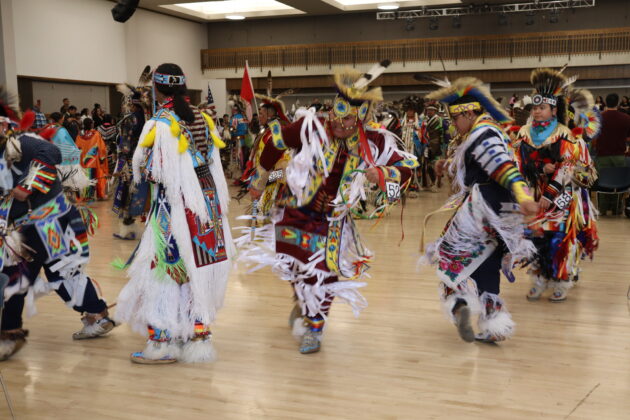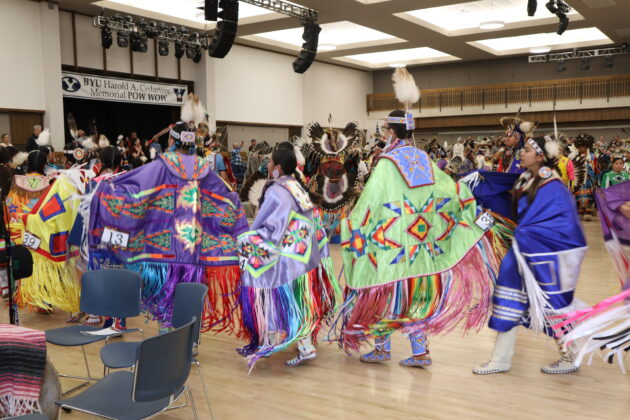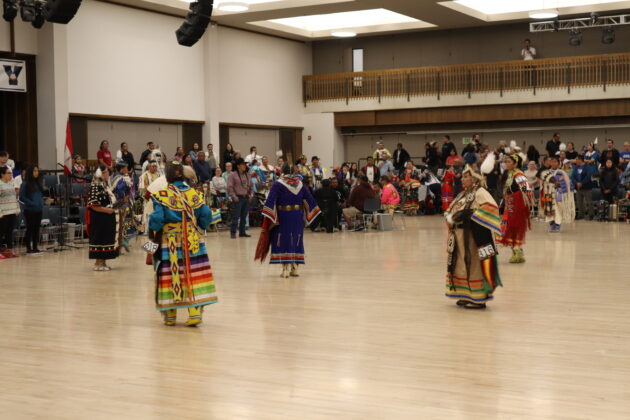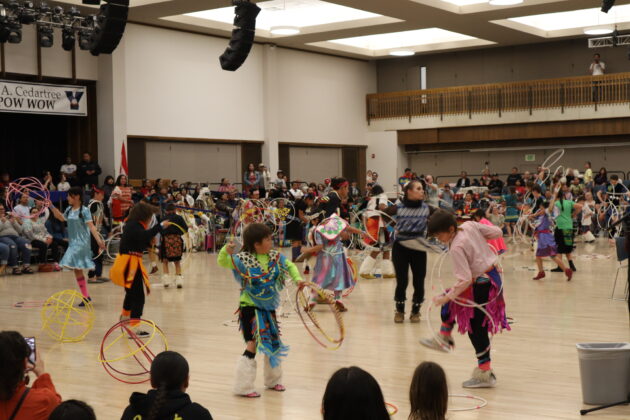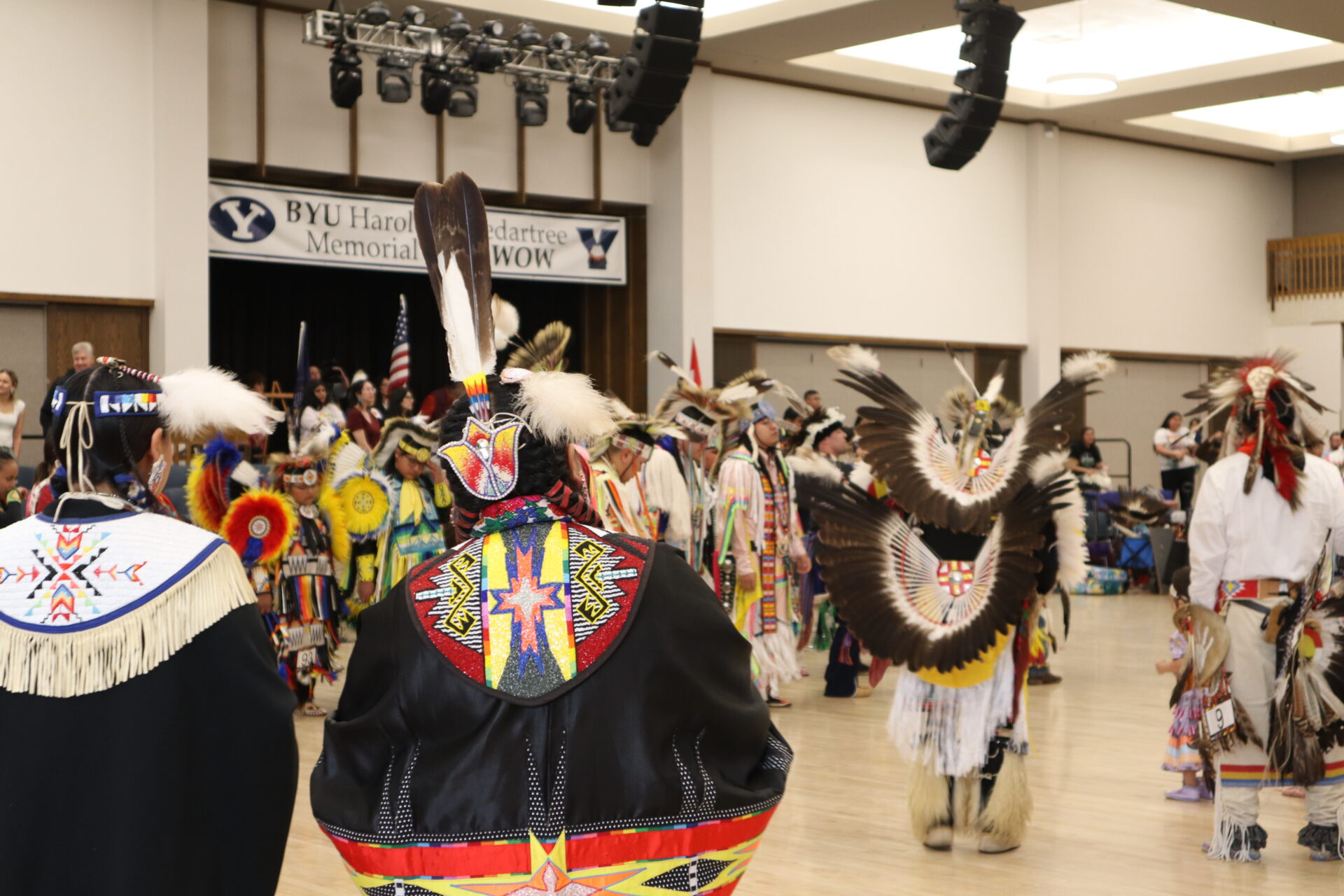
BYU’s 43rd Annual Harold A. Cedartree Memorial Pow Wow invited dancers of various Native American tribes to the Wilkinson Center Ballroom for a weekend of honoring family and traditions.
The powwow, hosted by BYU Multicultural Student Services on Friday, March 22, and Saturday, March 23, gave spectators the opportunity to celebrate traditional dances and songs of Native American cultures that have been passed down through generations.
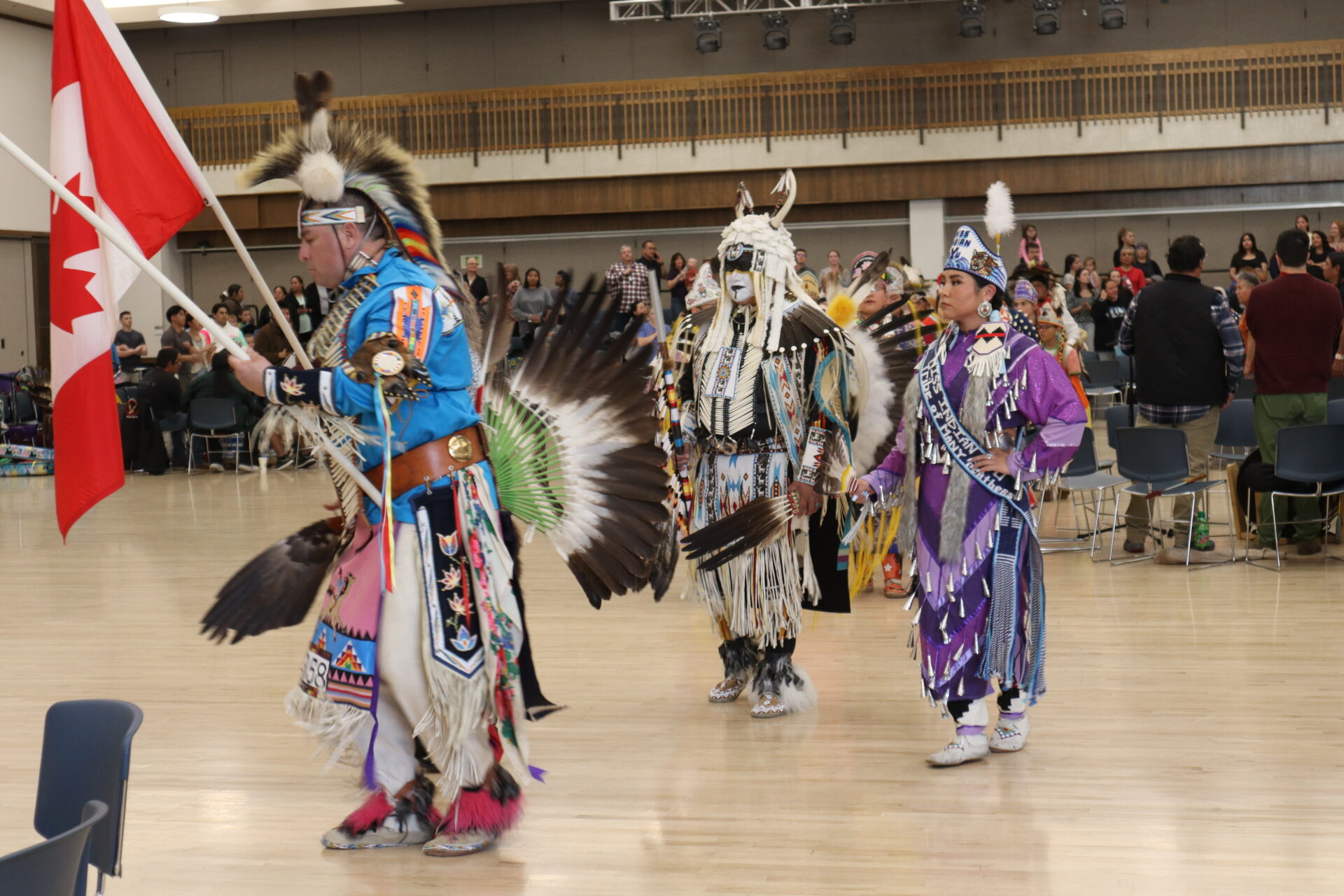
The event began on both days with a Grand Entry, inviting all dancers to enter the ballroom in a parade led by the U.S. and Canadian flags as well as this year’s Head Man, Brandon Mansfield, and Head Lady, Savanna Silversmith.
Following the Grand Entry on Friday, the host drum for the event, Desert Creek, sang the Flag Song and the Victory Song. During the Victory Song, emcee Harold Begaye described the dance as one for those who cannot dance with them, such as for those who are in hospitals or are currently incarcerated.
“Dance with us. Carry on our tradition. Carry on our culture,” Begaye encouraged.
Head Man Brandon Mansfield described the powwow as a time for reunion. He expressed his ability to be successful comes from how much he values his Native American heritage and from his faith.
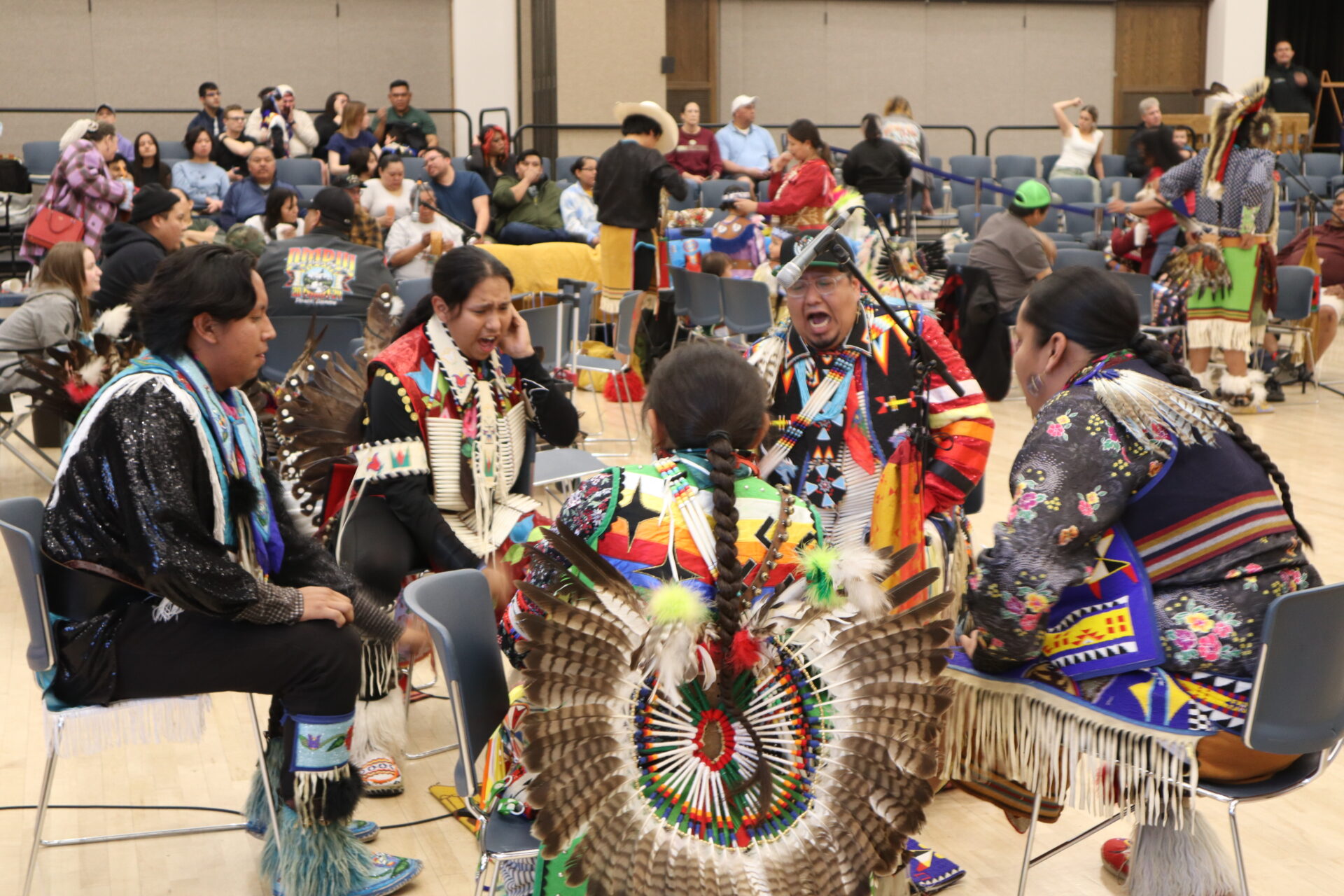
“I am a person that really believes in deity,” Mansfield said. “I believe in our Heavenly Father, I believe in Jesus Christ, I believe in the Holy Ghost, and without the Godhead in my corner, I could not be where I am today.”
Dancers performed various Native American dances at the event, including fancy shawl dance, the Grass Dance, traditional dance and jingle dance. Each dance symbolizes ideas such as healing or growth and incorporates unique regalia, according to a display at the event.
Regalia are sacred clothing often worn at Native American celebrations that serve as a symbol of honor and reflect the wearer’s status among their culture, according to The Canadian Encyclopedia.
The event also drew Native American vendors selling beadwork, T-shirts, jewelry, hats, artwork and more in the Wilkinson Center Garden Court.


